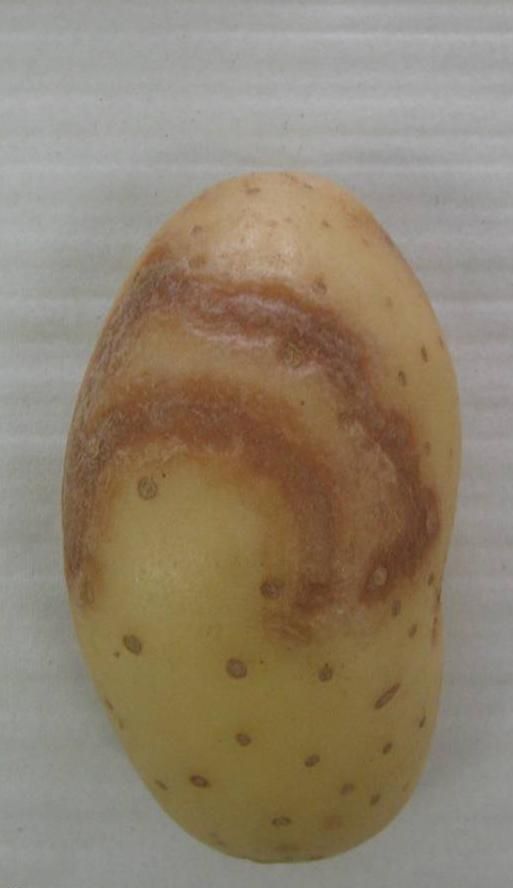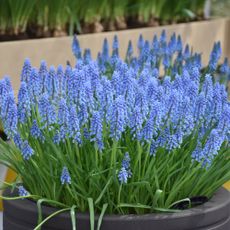What Is Potato Ringspot: Recognizing Corky Ringspot In Potatoes


Corky ringspot is a problem affecting potatoes that can lead to real trouble, especially if you’re growing them commercially. While it may not kill the plant, it gives the potatoes themselves an unpleasant look that’s hard to sell and less than ideal to eat. Keep reading to learn more about recognizing and managing corky ringspot in potatoes.
Symptoms of Corky Ringspot in Potatoes
What is potato ringspot? Corky ringspot of potatoes is caused by a disease called tobacco rattle virus. This virus is spread primarily by stubby root nematodes, microscopic worms that feed on plant roots. These nematodes will feed on infected roots, then move on to the roots of uninfected plants, spreading the virus underground without your knowledge. Even once a potato is infected with corky ringspot, you may not realize it, as the symptoms are almost always underground. Occasionally, the leaves of the plant will appear smaller, puckered, and mottled. Usually, however, symptoms are only inside the potato, manifesting as darkly colored, cork-like textured rings, curves, and spots inside the flesh of the tuber. In tubers with thin or light skin, these dark areas can be seen on the surface. In severe cases, the shape of the tuber can become deformed.
How to Manage Potatoes with Corky Ringspot Virus
Unfortunately, there is no way to treat corky ringspot of potatoes, not least of all because you often don’t know you have it until you harvest and cut into your tubers. Prevention is key with corky ringspot. Only buy seed potatoes that are certified to be free of the virus, and don’t plant in soil that has already shown to contain the virus. When cutting potatoes for seed, sterilize your knife frequently, even if you don’t see any symptoms. Cutting into infected tubers is a common way for the virus to spread.
Gardening tips, videos, info and more delivered right to your inbox!
Sign up for the Gardening Know How newsletter today and receive a free copy of our e-book "How to Grow Delicious Tomatoes".

The only child of a horticulturist and an English teacher, Liz Baessler was destined to become a gardening editor. She has been with Gardening Know how since 2015, and a Senior Editor since 2020. She holds a BA in English from Brandeis University and an MA in English from the University of Geneva, Switzerland. After years of gardening in containers and community garden plots, she finally has a backyard of her own, which she is systematically filling with vegetables and flowers.
-
 Best Tomatoes For Containers: 10 Tastiest Varieties For Plentiful Produce In Compact Areas
Best Tomatoes For Containers: 10 Tastiest Varieties For Plentiful Produce In Compact AreasThese are the best tomatoes for containers that prove you don't need to have a large space or elaborate garden to grow delicious produce.
By Bonnie L. Grant
-
 Ultimate Potted Flowers For Spring: 8 Brilliant Blooming Options for Spring Containers
Ultimate Potted Flowers For Spring: 8 Brilliant Blooming Options for Spring ContainersCelebrate the most uplifting of seasons with the most dazzling container flowers imaginable. Here, we present some of the loveliest potted flowers for spring…
By Tonya Barnett